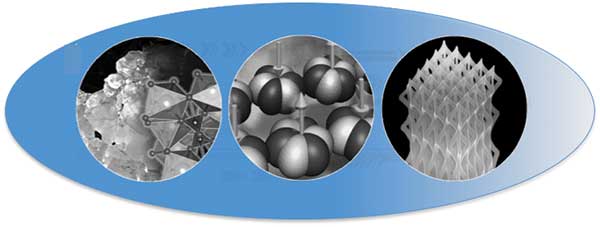The Basics of Neutron Scattering
Jason S Gardner (National Synchrotron Radiation Research Center, Taiwan), Chair Elected

Jason S Gardner
Early career scientists, or any scientist willing and eager to develop new tools for their academic/research progression should consider the possibilities at large scale facilities. These billion dollar labs provide state of the art research for all researchers through a peer review process and in some instances will even pay the traveling expenses to perform the research. In this article I will highlights some of the unique opportunities in neutron scattering.
Neutrons are subatomic particles with no net electric charge, unlike other particles such as protons and electrons, which have an intrinsic electric charge. While the latter interactions are dictated by Coulomb forces involving strong charge repulsion or attraction, charge-free neutrons can move through matter undeterred by these factors. This translates to neutrons generally possessing the ability to penetrate deeper into matter than other subatomic particles, providing information about the bulk characteristics of that matter that cannot be gained from the scattering of other subatomic particles with shorter penetration depths. This opens up a whole variety of possible physics knowledge that can be acquired from studying neutron-matter interactions including the physics of buried interfaces, the properties of materials within other materials and the dynamics of active units within a biologically relevant system. In general neutron-based measurements contribute to a broad spectrum of activities including in engineering, materials development, polymer dynamics, chemical technology, medicine, and physics.

Map of the bigger neutron research centers. Red are sources that produce their neutrons by Spallation, yellow by fission.
There are currently around 30 active neutron research facilities scattered around the globe [http://www.neutron.anl.gov/facilities.html], each one containing the means to generate enough neutrons for experimental research in an appropriate time period. These neutrons are usually produced by reactors or by a process known as spallation or through a nuclear process like the p-n reaction in Be.
Other than its charge neutrality, the neutron has several other characteristics that makes it ideal for condensed matter science and sets it apart from other probes like photons or electrons. Below I outline the important ones.
WAVELENGTHS − Neutrons behave like microscopic particles, propagate as waves which can set other particles into motion, losing or gaining energy and momentum in the process. Their associated wavelength ranges from ≈ 0.01 nm to ≈ 2.5 nm, making structures as small as atoms and as large as biological cells visible.
ENERGIES – Neutron energies are measured in millielectronvolts which is the same magnitude as atomic motions. Spectrometers can measure the difference in neutron energy from as small as nanoelectronvolts and as large as electronvolts. This allows scientists measure the dynamics of proteins folding, melting glasses and diffusing atoms like hydrogen in advanced materials.
SCATTERING POWER – Those probes that scatter form electrons, have a higher scattering power of the heaver elements making light elements almost invisible in complex systems. Neutrons however scatter from the nucleus the scattering power varies quite randomly through the periodic table. More importantly, the scattering power is isotope specific making substitution possible. In soft matter studies hydrogen is ubiquitous, and can be distinguished from the chemically equivalent deuterium atom, making neutron scattering a very powerful techniques in protein crystallography and modern pharmacology.
MAGNETISM – The neutron behaves like a little bar magnet and all the scattering techniques can be used for the magnetic subsystems within a compound. The structure and dynamics of classical and quantum magnets from the nuclei and free electrons can be investigated.
These four characteristics of the neutron make it very powerful and useful in most if not all areas of science research today. Compared to photon and electron sources, neutron sources and beam lines are scarce. Novel instrumentation has helped us study more complex systems than those possible with the simple tools developed by the Nobel Laureates, Cliff Shull and Bertram Brockhouse. Neutron Imaging, prompts gamma analysis, computer simulations and polarization analysis of the neutron beams are the tools todays young investigators will be using to probe samples as diverse as ancient pottery shards to jet engines, quantum spin liquids to lake water pollutants and stresses in highway trusses to ion conductivity in modern batteries.

Complex materials research at the forefront of research today and in the minds of FECS members.
After obtaining his Ph.D. at Warwick University in the UK, Jason worked for several national laboratories in North America before moving to Sydney, Australia in 2013. From Sydney, he manages a group of five people performing neutron scattering at ANSTO, Australia, and around the world. He is currently the Neutron Group Leader at the National Synchrotron Radiation Research Center, Taiwan. His scientific interests are primarily in frustrated magnets, but he’s also performed research in many areas of condensed matter over thirty years of research. He has published over 120 papers and in 2008 was made a fellow of the Institute of Physics (UK). Jason is also a member-at-large of the APS Forum on International Physics.
